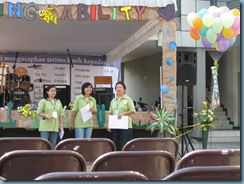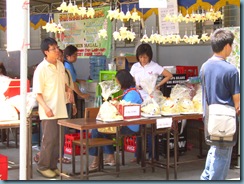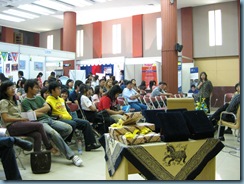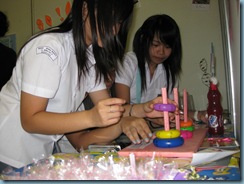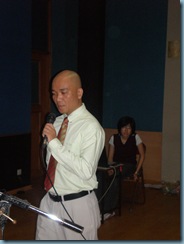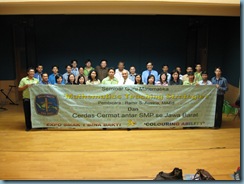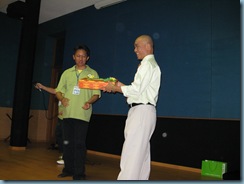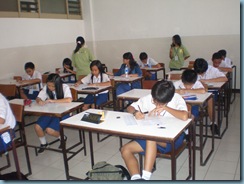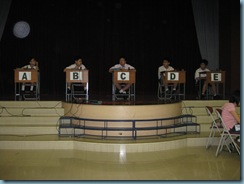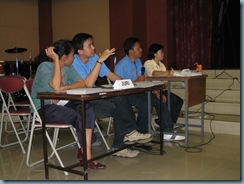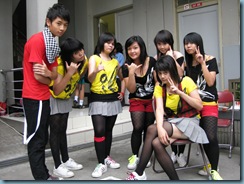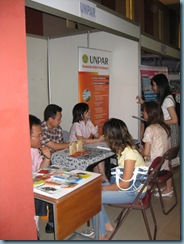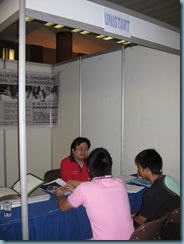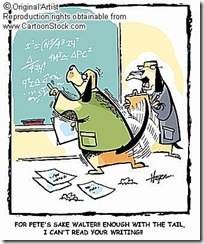
1. Leonhard Euler (1701 - 1783)
He was one of the greatest mathematicians of all time. Known as the "grandfather of Topology". He founded the "network theory" which is one of the most practical forms of topology. He wrote a whole library of outstnading, articles on all branches of mathematics. He was also responsible for the international adoption of many fundamental mathematical notations such as phi, e, i, and others.
The value of Special irrational number represented by " e" and the value e = 2.7193
The value e is often as the base in exponential equations as it often provides as a good model to many natural, social and economic phenomena.
Logarithm to the basic e, "loge x" is often abbreviated as " ln x". ln x is called Natural Logarithm or Napierian Logarithm (in honour of the Scottis Mathematician John Napier)
 2. Pythagoras (about 585 - 500 B.C.)
2. Pythagoras (about 585 - 500 B.C.)
He was a pupil if Thales is the best known for the relation between the sides of a right-angled triangle which bears his name.
He founded the "Order of Pythagoras" to study mathematics, music, science, philosophy and religion. The school was the first to exclusively and systematically apply deductive reasoning in solving mathematical problems.
The multiplication table that we know of today was also credited to them.They believed that the world was a stationary sphere and that it was the centre of the universe.
3. Thales (about 625 - 545 B.C.)

Thales was an outstanding Greek academican and merchant, was the first to use the idea of proofs in geometry, leading the way to abstract thinking.
He astounded the Egyptians by calculating the height of pyramid using proportionate right-angled triangles.
This helped to lay the foundation for the development of "Trigonometry"
 4. Blaised Pascal (1623 - 1662)
4. Blaised Pascal (1623 - 1662)
He showed his great intellect by proving an important theorem in projective geometry at the age of 16. He devised the world's second mechanical calculating machine at age 19, (the world's first was made by Wilhelm Schickard in 1623)
In 1654, he and Pierre de Fermat laid the foundation of probability theory. 

 5. Joseph Louise Lagrange (1736 - 1813)
5. Joseph Louise Lagrange (1736 - 1813)
He made significant contributions to the mathematics of differential equations, analysis, number theory, analystical and celstial mechanics.
He headed the commitee that led to the adoption of the metric system by many countries. He also played an important role in verifying Newton's universal law of gravitation.
 6. Geofrey Harold Hardy (1877 - 1947)
6. Geofrey Harold Hardy (1877 - 1947)
He was one of the best pure mathematicians that England has produced. He contributed in many fields of pure mathematics such as analysis and the number theory.
His book, "Pure Mathematics", revolutionised the teaching of mathematics i England in 1917. Hardy together with Ramanujan published an important piece of work on number theory.
 7. Carl Friedrich Gauss (1777 - 1855)
7. Carl Friedrich Gauss (1777 - 1855)
He was born a prodigy ; he could operate with numbers even before he could talk. He opened new horizon in almost all fields of pure as well as applied mathematics.
Many of the mathematics of the 19th and 20th centuries had their beginnings in the works of Gauss.
At he page of 17, he gave the first exact proof of the fundamental theorm of algebra, a proof that the greatest mathematicians of previous ages had attempted without success.
Gauss was named "The Prince of Mathematics" and is widely regarded together with Newton and Archimedes, as one of the three greatest mathematicians in history.
8. Pierre de Fermat (1601 - 1665)
Pierre de Fermat is perhaps the most famous number theorist in history. What is less widely known is that for Fermat mathematics was only an avocation: by trade, Fermat was a lawyer. 
He work on maxima and minima, tangents, and stationary points, earn him minor credit as a father of calculus.
Independently of Descartes, he discovered the fundamental principle of analytic geometry.
And through his correspondence with Pascal, he was a co-founder of probability theory.
But he is probably most well-known for his famous "Enigma".
Fermat's portrait is inscribed with this famous "Enigma", which is also known as Fermat's Last Theorem. It states that xn + yn = zn has no whole number solution when n > 2.
Fermat, having posed his theorem, then wrote
"I have discovered a truly remarkable proof which this margin is too small to contain."
The proof Fermat referred to was not to be found, and thus began a quest, that spanned the centuries, to prove Fermat's Last Theorem.
Fermat's image is also overlaid by Fermat's spiral. Fermat's spiral (also known as a parabolic spiral), is a type of Archimedean spiral, and is named after Fermat who spent considerable time investigating it.
 9. Sir Isaac Newton (1642 [1643 New Style Calendar] - 1727)
9. Sir Isaac Newton (1642 [1643 New Style Calendar] - 1727)
Sir Isaac Newton stated that "If I have seen further it is by standing upon the shoulders of giants." Newton's extraordinary abilities enabled him to perfect the processes of those who had come before him, and to advance every branch of mathematical science then studied, as well as to create some new subjects. Newton himself became one of those giants to whom he had paid homage.
Newton's image is set against the cover of a tome easily recognizable to those familiar with the history of mathematics -- his Principia Mathematica, The Mathematical Principles of Natural Philosophy, first published in 1687.
Its first two parts, prefaced by Newton's "Axioms, or Laws of Motion", dealt with the "Motion of Bodies". The third part dealt with "The System of the World" and included Newton's writings on the Rules of Reasoning in Philosophy, Phenomena or Appearances, Propositions I-XVI, and The Motion of the Moon's Nodes.
Inscribed over Newton's image is Newton's binomial theorem, which dealt with expanding expressions of the form (a+b) n. This was Newton's first epochal mathematical discovery, one of his "great theorems". It was not a theorem in the same sense as the theorems of Euclid or Archimedes, insofar as Newton did not provide a complete "proof", but rather furnished, through brilliant insight, the precise and correct formula which could be used stunningly to great effect.
Newton is widely regarded as the inventor of modern calculus. In fact, that honor is correctly shared with Leibniz, who developed his own version of calculus independent of Newton, and in the same time frame, resulting in a rancorous dispute.
Leibniz's calculus had a far superior and more elegant notation compared to Newton's calculus, and it is Leibniz's notation which is still in use today.
Newton's portrait shares a color palette with Leibniz, the other acknowledged "inventor" of calculus, Lagrange, a pioneer of the "calculus of variations", and Laplace and Euler, two of those who built on what had been so ably begun.
 10. Eukleides (Euclid) c. 330 - 275 B.C.E
10. Eukleides (Euclid) c. 330 - 275 B.C.E
Eukleides (Euclid of Alexandria), although little is known about his life, is likely the most famous teacher of mathematics of all time. His treatise on mathematics, The Elements, endured for two millennia as a principal text on geometry.
The Elements commences with definitions and five postulates. The first three postulates deal with geometrical construction, implicitly assuming points, lines, circles, and thence the other geometrical objects.
Postulate four asserts that all right angles are equal -- a concept that assumes a commonality to space, with geometrical constructs existing independent of the specific space or location they occupy.
Eukleides is pictured with what is perhaps his most famous postulate -- the fifth postulate, often cited as the "parallel postulate". The parallel postulate states that one, and only one, line can be drawn through a point parallel to a given line -- and it is from this postulate, and on this basis, that what has come to be known as "Euclidean geometry" proceeds.
It was not until the 19th century that Euclid's fifth postulate -- the "parallel postulate" was rigorously and successfully challenged.
The two parallel lines of Euclid meet and converge in the portrait of Johann Carl Friedrich Gauss -- whose work led to the emergence of non-Euclidean geometry, where Euclid's fifth postulate gave way to new mathematical universe, where 2 parallel lines could, in fact, meet.
The portrait of Gauss shares a common dominant color palette with the portrait of Euclid -- but two different conceptions of 'geometry'.
Pictured over Euclid's right shoulder is a small drawing which is taken from Euclid's proof of the right angled triangle which has come to be known as the theorem of Pythagoras. While very little is known about the lives of either Pythagoras or Eukleides, it is both plausible and likely that Euclid and Pythagoras independently discovered and "proved" this basic theorem. Euclid's proof of this theorem relies on most of his 46 theorems which preceded this proof.
Central to Euclid's portrait is a circle with its radius drawn. Euclid's geometry was one of construction, and the circle and radius were central elements to Euclid's constructions.
 11. Gottfried Wilhelm Leibniz (1646 - 1716 )
11. Gottfried Wilhelm Leibniz (1646 - 1716 )
Gottfried Wilhelm Leibniz was a philosopher, mathematician, physicist, jurist, and contemporary of Newton. He is considered one of the great thinkers of the 17th century. He believed in a universe which followed a "pre-established harmony" between mind and matter, and attempted to reconcile the existence of a material world with the existence of a supreme being.
The twentieth century philosopher and mathematician Bertrand Russell considered Leibniz's greatest claim to fame to be his invention of the infinitesimal calculus -- a remarkable achievement considering that Leibniz was self-taught in mathematics.
Leibniz is portrayed overlaid with integral notation from his calculus which he developed coincident with but independently of Newton's development of calculus.
Although the historical record suggest that Newton developed his version of calculus first, Leibniz was the first to publish. Unfortunately, what emerged was not fruitful collaboration, but a rancorous dispute that raged for decades and pitted English continental mathematicians supporting Newton as the true inventor of the calculus, against continental mathematicians supporting Leibniz.
Today, Leibniz and Newton are generally recognized as 'co-inventors' of the calculus.
But Leibniz' notation for calculus was far superior to that of Newton, and it is the notation developed by Leibniz, including the integral sign and derivative notation, that is still in use today.
Leibniz considered symbols to be critical for human understanding of all things. So much so that he attempted to develop an entire 'alphabet of human thought', in which all fundamental concepts would be represented by symbols which could be combined to represent more complex thoughts. Leibniz never finished this work.
Leibniz, who had strong conceptual differences with Newton in other areas, notably with Newton's concept of absolute space, also develop bitter conceptual differences with Descartes over what was then referred to as the "fundamental quantity of motion", a precursor of the Law of Conservation of Energy.
Much of Leibniz' work went unpublished during his lifetime. He died embittered, in ill health, and without achieving the considerable wealth, fame, and honor accorded to Newton.
Leibniz' diverse writings -- philosophical, mathematical, historical, and political -- were resurrected and published in the late 19th and 20th centuries.
But calculus -- with Leibniz notation still in use today -- remains his towering legacy.
 12. Evariste Galois (1811 - 1832)
12. Evariste Galois (1811 - 1832)
Évariste Galois (French pronunciation: [evaʁist ɡalwa]; October 25, 1811 – May 31, 1832) was a French mathematician born in Bourg-la-Reine. While still in his teens, he was able to determine a necessary and sufficient condition for a polynomial to be solvable by radicals, thereby solving a long-standing problem. His work laid the foundations for Galois theory, a major branch of abstract algebra, and the subfield of Galois connections. He was the first to use the word "group" (French: groupe) as a technical term in mathematics to represent a group of permutations. A radical Republican during the monarchy of Louis Philippe in France, he died from wounds suffered in a duel under murky circumstances[1] at the age of twenty.
Known for Work on the theory of equations and Abelian integrals

